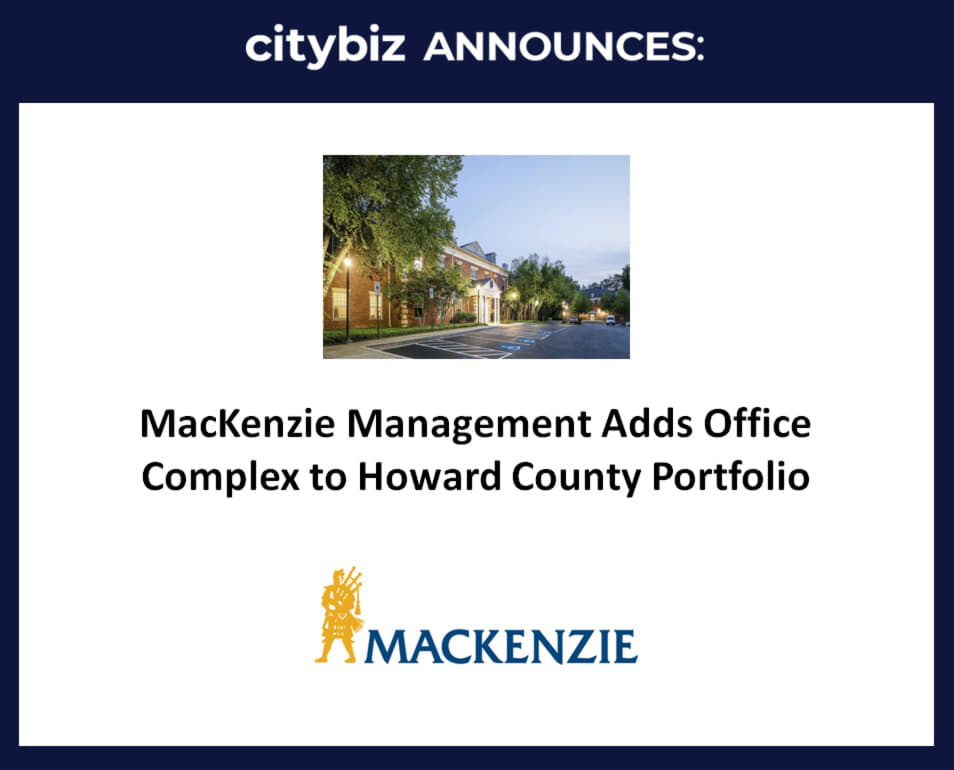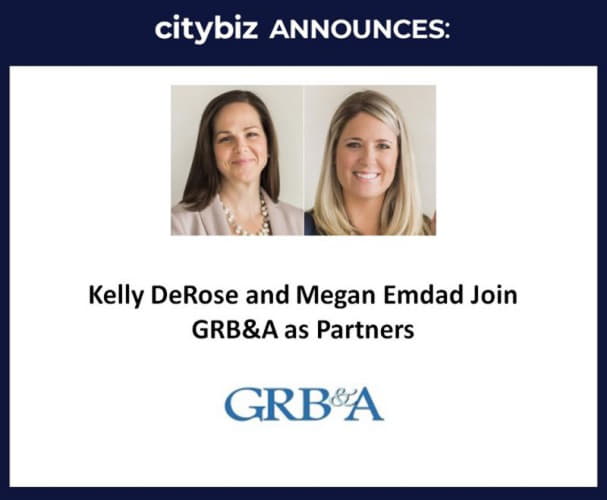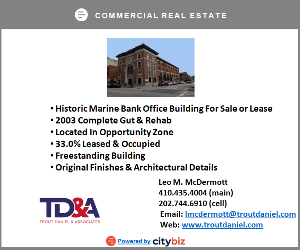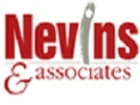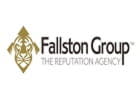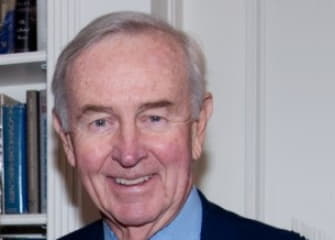
Joseph R. Hardiman
Click here for Part II, Part III & Part IV
Joe Hardiman's quiet, powerful and positive influence in Baltimore is unknown to most Baltimoreans. The impact of his contributions are understood among the informal leaders in town. He was instrumental in the growth of Alex. Brown & Sons, where he served as Administrative Partner. He was effectively the chief operating officer of the firm during the period of its transition from a regional to a national investment banking firm.
He served with distinction on the Board of Visitors and Trustees of several of the University of Maryland Schools and Foundations. An alumnus of both the College and the Law institution, Hardiman served the school throughout his career.

Hardiman was a close confidant of Sally Michel, herself a close confidant of first Mayor and then Governor William Donald Schaefer. As a result, Hardiman had an insider's knowledge indirect influence on many of the progressive initiatives undertaken by the Mayor and then the Governor.
As an example, Hardiman was a founder of the Baltimore Chesapeake Outward Bound School. This was the first Outward Bound School created to serve inner city youth. Now in its fourth decade, the school has taught over 80,000 students. This year alone, the school expects to serve just under 6,000 students. It is an important tool for the Baltimore City Police Department's outreach to citizens. Police officers join Baltimore City School students on the school's rope courses and climbing walls. It is confidence-building, fun and trust-building.
Hardiman served the nation as well. He was the chief executive officer of the National Association of Securities Dealers, the nation's self-regulatory body for the financial markets. As head of NASD, he operated the NASDAQ Stock Market, a fundamental driver of the nation's economy. The NASDAQ is the envy of the world for job creation and Hardiman lead it for a decade.
This interview is designed to tell the citizens of Baltimore more about a mover and shaker who has influenced the city and the nation effectively for most of his adult life.
ALFRED BERKELEY: Tell me a little bit about your childhood and your background. Where are you from?
JOE HARDIMAN: I was born and raised in Salisbury on the Eastern Shore—small town at the time, about 10,000 people. I went to the public schools there, which was in a way a great education because, in a town that size, everybody went to the public schools, so you learned to get along with the children of the farmers. and the merchants, and the professionals, and the teachers, and so it was a great opportunity to really learn how to deal with people from all stripes of life.
And then you went to the University of Maryland?
I went from the high school in Salisbury to the University of Maryland where I got my undergraduate degree, and then on to their law school and got at that time what was known as an L.L.B., which is now a J.D., from the University of Maryland Law School.
You ended up serving on the board of the law school, or the board of the university?
The university is overseen by the Board of Regents, but each school has its own advisory board or foundation board, so I ended up eventually chairing the board of visitors of the law school after I stopped working full-time. And then, I was also active with the University of Maryland System Foundation. As well as on the University of Maryland Baltimore Foundation, which really just focuses on the professional schools that are all located in Baltimore.
When you got out of law school, did you practice law or did you go into business?
No, I spent my first year clerking for a judge on the Court of Appeals in Maryland—a fellow by the name of Hall Hammond, who eventually became the Chief Justice. He was a former Attorney General of Maryland, he was one of the leading jurists in Maryland’s recent history, and he was a great mentor for me in that he not only taught me a lot about writing, but he taught me a lot about life, and he got me exposed to the world of investing, which I had really not had any exposure to previously.
How did a judge get you involved in investing?
Well, he was also the trustee of a number of trusts that had been established during his legal practice. As a trustee, he not only had the legal responsibility for carrying out the fiduciary responsibilities but also the investment responsibilities.
He farmed a little of that background work to you?
He gave me a lot of the legwork to do, yes, but it gave me an exposure that I hadn’t had before.
You practiced law after that?
After that, after a one-year clerkship, I went to work with the law firm of Miles & Stockbridge, which obviously is still very much of a leading law firm here in Baltimore. At the time, there were only 14 of us in the firm. Today, they have over 250 lawyers. There were nine partners and five associates. I was the lowliest associate.
Almost two partners for each associate to take care of.
That’s right. And, so we had a number of corporate clients, and the one I worked most frequently with is what is now known as Martin Marietta—It started as Glenn L. Martin Company and became Martin Marietta—but the main partner of the firm, Clarence Miles, was their general counsel. I worked closely with Mr. Miles on that account, as well as a number of other accounts, but I was primarily in the business sector and got exposed to doing securities work for Martin Marietta.
Well, that’s a great firm. Miles & Stockbridge is a great firm, and Martin Marietta is a great firm, so that’s quite a combination.
Mr. Miles not only was a senior partner of Miles & Stockbridge, but he was also the general counsel, as I mentioned, of Martin Marietta, so he had another legal staff up there, and I had the opportunity to interface with both of them—both in Baltimore and at the corporate headquarters, which was then in New York.
How did you get from practicing law to Robert Garrett?
It was a combination of things. I did more securities work, learned more about the securities markets, and then started to do investing on my own through a fellow named Charlie Stout at Robert Garrett & Sons. Through Charlie I met Truman Semans and a number of other people at Garrett. I met a fellow named Bob Killebrew quite by accident,: he and I ran into each other on Ruxton Road in Baltimore County, literally, and that was our first introduction. Bob was already at Robert Garrett. Subsequently, when I was asked to join the firm by Truman, to become really just a general assistant to the then-president—a fellow named Meredith Boyce—Bob was there, and we’ve had a lifelong relationship ever since then.
Talk a little bit about Robert Garrett because I think it’s one of the jewels of Baltimore history that’s not well known.
When I went to work with Garrett in 1968, after practicing law for five years, there were a number of small to mid-sized brokerage firms in Baltimore. There was not really one dominant firm. Alex Brown may have been the largest, but you had some other firms like John C. Legg, Stein Brothers & Boyce, Mead Miller and Robert Garrett, and Baker Watts, so we had a thriving local brokerage community and investment banking community. We also had a thriving commercial banking community with about five or six significant commercial banks headquartered here in Baltimore.
Garrett was a general brokerage firm that did investment banking work and had a small asset management business. I went to work, as I said, as the assistant to Meredith Boyce and got an exposure to all parts of the firm because it was a small firm. It was a 120-person firm, and you could get involved in all aspects of the firm.
How did you get involved?
My primary responsibilities at the outset was helping the firm work its way through the then-paperwork crunch that existed on Wall Street. At that time, everything was paper-oriented. Any time you had a securities transaction, paper had to be passed back and forth between the buyers and the seller. As volume started to build up to a grand total of two million shares a day in 1968, the Street just couldn’t handle the paper, and so there was a real logjam. In fact, we used to close the New York Stock Exchange one day a week in order to allow us to process all the paper and catch up.
So, there was a lot to be done there. And out of that grew things like the Depository Trust Company, which became a central depository for all securities, so they didn’t have to be moved back and forth, and they could be transferred by book entry rather than paper transfer; the National Securities Clearing Corporation, which consolidated the clearing of all securities transactions after they had been executed; and those things really laid the groundwork for the subsequent increase in volume that came in the ‘70s and ‘80s and ‘90s. Without them, I’m not sure the Street could have really handled the increase in volume that came largely through increased participation by individual investors in the mutual funds, but also pension funds and other institutions started to increase their activities in the stock market. And that volume, as it grew, had to be processed and had to be processed through new means.
So, you had the evolution of a series of community actions like the Clearing Corporation and Depository Trust, but you also had the automation of the firms themselves—about a 10-year lag there.
The firms had to automate, and technology—given your background, you understand it better than I—technology within was largely driven by large mainframe computers, so the large firms could bring in their own computer systems and build their own computer networks, but the smaller firms had to be dependent upon service bureaus and others that provided those services to those firms. We all had to automate at that stage in the game to keep up with the growth of the markets.
One trend that was going on then was the automation trend and the development of the central shared services like Depository Trust. Another trend that I think is important and not well-understood is the move from partnerships to corporations and the concomitant move from relationships to transactions. Talk a little bit about that.
Most of the firms had started as partnerships. Some, like Robert Garrett, had incorporated earlier, and others, like Alex Brown, subsequently incorporated later, but partnerships were the historic mode of operating a securities and investment banking business. Even the large firms like Morgan Stanley or Goldman Sachs started out as partnerships originally. And, the partnership mode was, I thought, a perfect vehicle for operating in the securities business, because when you’re a general partner of a firm, all of your personal assets are on the line every day, so you’re very careful about 1) who you do business with and 2) the type of business that you do. I think that that was a great asset that was subsequently lost as the move from partnerships to incorporation took place in the ‘70s and ‘80s. We moved from very much a relationship business, as you suggested, to a transaction-driven business without as much due diligence, if you will, as to who was on the other side of the transaction or as to the quality of business that you may be doing.
It’s really changed the Street in ways that will never go back, and I guess the big piece of that is the need for permanent capital.
Well, as business grew and as firms started to take on more underwriting responsibilities, they needed more permanent capital. You know, I always believe that even a general partnership could attract the capital that it needed if it were operated as a successful business. And Goldman Sachs did that for quite a while as a partnership and got the capital that they needed. But as the volume of business grew, the capital requirements grew, the exposure of the partners grew as well, so the partners became increasingly concerned about their liabilities, and the combination of that concern and the need for capital drove a lot more of them from the partnership mode into the corporate mode, where they could have limited liability and also access to more permanent capital.
Sponsored by:
Founded in 1993, WMS Partners is the only independent multi-family office in the Baltimore area that isn’t associated with a brokerage firm, bank or trust company. Our team of approximately 50 professionals and 14 owners spanning three generations assists in the direction of our client’s financial goals and objectives and oversees in excess of $3 billion in assets.
As our client’s advocate and central point for their financial affairs, we work pro-actively with service providers, including accountants, attorneys, consultants, insurance professionals and philanthropic advisors. We are large enough that we provide exposure to many unique ideas and strategies in the investment, estate, tax, financial advisory and risk management arena; but small enough to provide discreet, pro-active individualized guidance.


Edwin Warfield, CEO of citybizlist, conducts the CEO Interviews.
If you're interested in reaching CEOs, please contact edwin.warfield@citybuzz.co
Connect on LinkedIn



